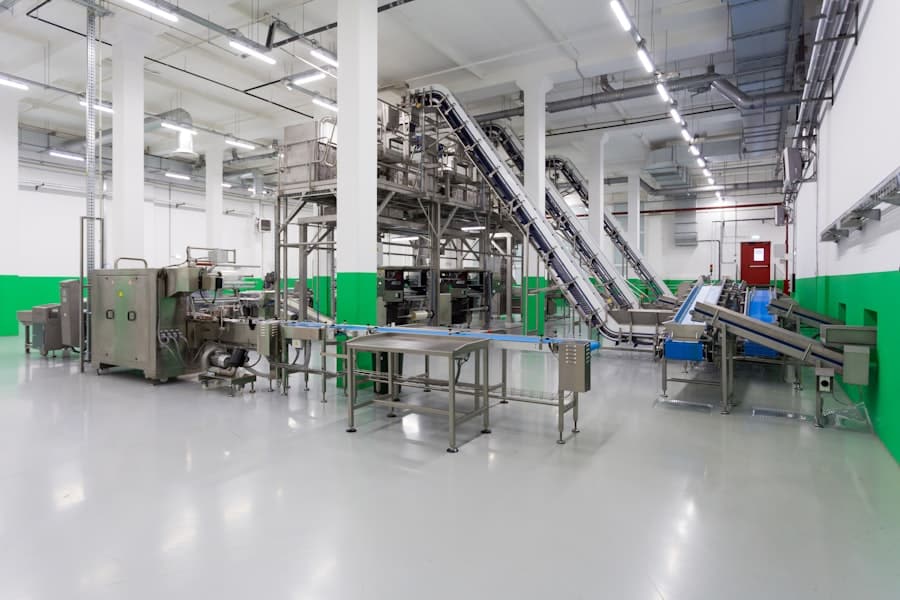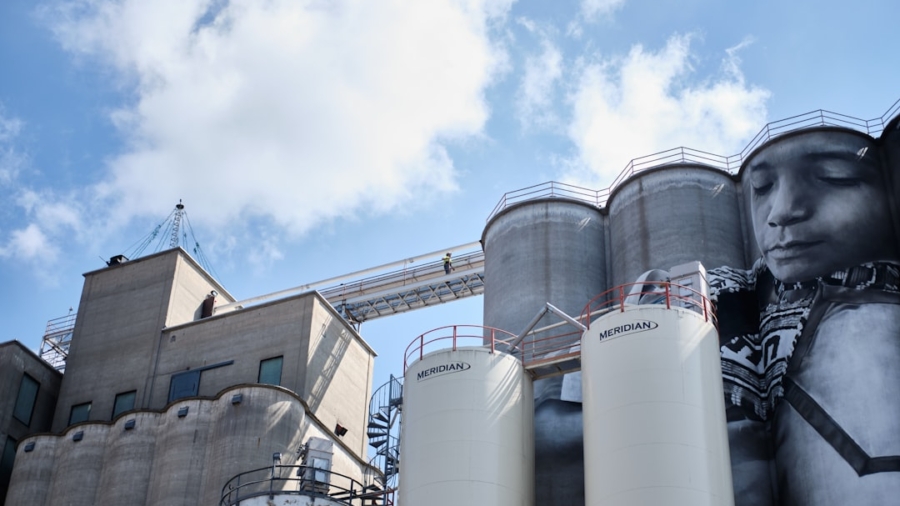In recent years, the intersection of automation and sustainability has garnered significant attention from industries worldwide. As businesses strive to meet the dual challenges of increasing productivity and reducing their environmental footprint, automation emerges as a pivotal solution. The integration of advanced technologies such as artificial intelligence, robotics, and the Internet of Things (IoT) not only streamlines operations but also fosters sustainable practices.
This synergy is particularly crucial in an era where climate change and resource depletion pose existential threats to our planet. Automation facilitates a paradigm shift in how industries operate, enabling them to adopt more sustainable practices without compromising efficiency. By leveraging data analytics and machine learning, organizations can optimize their processes, reduce waste, and enhance energy efficiency.
The potential for automation to drive sustainability is vast, encompassing various sectors, including manufacturing, agriculture, and logistics. As we delve deeper into this topic, we will explore how automation contributes to decreasing energy consumption, minimizing waste and emissions, improving resource efficiency, enhancing safety and compliance, and transforming supply chain management.
Key Takeaways
- Automation plays a crucial role in promoting sustainability by reducing energy consumption, minimizing waste and emissions, improving resource efficiency, enhancing safety, and ensuring environmental compliance.
- Automation helps decrease energy consumption by optimizing processes, controlling equipment usage, and implementing energy-efficient technologies.
- Through automation, industries can minimize waste and emissions by streamlining production processes, implementing recycling and waste management systems, and monitoring emissions to meet environmental regulations.
- Improved resource efficiency is achieved through automation by optimizing raw material usage, reducing water consumption, and implementing efficient production methods.
- Automation enhances safety and environmental compliance by implementing real-time monitoring, predictive maintenance, and ensuring adherence to environmental regulations and standards.
Decreasing Energy Consumption with Automation
Optimizing Energy Consumption
By analyzing real-time energy consumption data, companies can adjust their operations to minimize energy waste during peak hours or when machinery is idle. This not only leads to cost savings but also contributes to a reduction in greenhouse gas emissions.
Automation Technologies for Energy Efficiency
Automation technologies such as variable frequency drives (VFDs) can optimize the performance of electric motors by adjusting their speed according to the load requirements. This capability is particularly beneficial in industries where motors account for a significant portion of energy consumption.
Achieving a Sustainable Energy Profile
By integrating automated solutions, organizations can achieve a more sustainable energy profile while maintaining operational efficiency. For example, in water treatment plants, VFDs can regulate pump speeds based on real-time demand, resulting in substantial energy savings.
Minimizing Waste and Emissions through Automation

The reduction of waste and emissions is another critical area where automation plays a transformative role. Automated systems can enhance precision in production processes, leading to fewer defects and less material waste. For instance, in the textile industry, automated cutting machines can optimize fabric usage by calculating the most efficient layout for patterns.
This not only minimizes scrap material but also reduces the environmental impact associated with fabric production and disposal. In addition to minimizing waste during production, automation can also help organizations monitor and manage emissions more effectively. Advanced monitoring systems equipped with IoT sensors can provide real-time data on emissions levels across various processes.
This information enables companies to comply with environmental regulations more efficiently and take proactive measures to reduce their carbon footprint. For example, a chemical manufacturing plant might implement an automated emissions monitoring system that alerts operators when emissions exceed regulatory thresholds, allowing for immediate corrective actions.
Improving Resource Efficiency with Automation
Resource efficiency is a cornerstone of sustainable practices, and automation significantly enhances this aspect across various sectors. By automating resource management processes, organizations can ensure that materials are used judiciously and that resources are allocated optimally. In agriculture, for instance, precision farming techniques utilize automated systems to monitor soil conditions, weather patterns, and crop health.
This data-driven approach allows farmers to apply fertilizers and pesticides only when necessary, reducing chemical runoff into waterways and conserving resources. In manufacturing settings, automation can streamline inventory management by employing just-in-time (JIT) principles. Automated inventory systems can track stock levels in real-time and trigger reorders only when necessary.
This reduces excess inventory that may go to waste and ensures that resources are utilized efficiently throughout the production cycle. Companies like Toyota have successfully implemented JIT inventory systems that not only enhance operational efficiency but also contribute to sustainability by minimizing resource consumption.
Enhancing Safety and Environmental Compliance through Automation
Safety and environmental compliance are paramount concerns for industries aiming for sustainability. Automation enhances safety by reducing human exposure to hazardous conditions and minimizing the risk of accidents. For example, in mining operations, autonomous vehicles can transport materials without putting human operators at risk in dangerous environments.
These automated systems are equipped with advanced sensors and navigation technologies that allow them to operate safely while adhering to strict safety protocols. Furthermore, automation plays a crucial role in ensuring compliance with environmental regulations. Automated reporting systems can track emissions, waste generation, and resource usage in real-time, providing organizations with accurate data for regulatory compliance.
This not only simplifies the reporting process but also enables companies to identify areas for improvement proactively. For instance, a manufacturing facility might implement an automated compliance management system that alerts management when emissions exceed permissible limits, allowing for timely interventions.
Automation’s Impact on Sustainable Supply Chain Management

Optimizing Logistics Operations
Advanced algorithms can analyze traffic patterns and weather conditions to determine the most efficient delivery routes for transportation fleets.
Enhancing Transparency
Automation facilitates greater transparency within supply chains by enabling real-time tracking of materials and products. Blockchain technology combined with IoT devices allows companies to monitor the entire lifecycle of products from raw material extraction to end-of-life disposal.
Empowering Consumers
This transparency not only enhances accountability but also empowers consumers to make informed choices about the sustainability of the products they purchase. Companies like Unilever have embraced this approach by utilizing blockchain technology to trace the sourcing of raw materials, ensuring ethical practices throughout their supply chain.
Case Studies: Successful Implementation of Automation for Sustainability
Several organizations have successfully implemented automation strategies that significantly contribute to sustainability goals. One notable example is Siemens’ Amberg Electronics Plant in Germany, which utilizes a fully automated production line for manufacturing circuit boards. The plant employs advanced robotics and IoT technologies to monitor production processes in real-time, resulting in a 99% reduction in defects and a substantial decrease in energy consumption.
This facility serves as a model for how automation can enhance both efficiency and sustainability in manufacturing. Another compelling case study is that of Coca-Cola’s bottling plants, which have integrated automated systems for water management. By employing advanced monitoring technologies, Coca-Cola has achieved a 20% reduction in water usage per liter of beverage produced over recent years.
The automated systems track water consumption at every stage of production, allowing the company to identify inefficiencies and implement targeted improvements. This initiative not only conserves water resources but also aligns with Coca-Cola’s broader sustainability goals.
Future Trends and Opportunities for Automation in Industrial Sustainability
Looking ahead, the future of automation in industrial sustainability is poised for significant advancements driven by emerging technologies. The rise of artificial intelligence (AI) will enable even greater levels of optimization across various processes. AI algorithms can analyze vast amounts of data from automated systems to identify patterns and predict future resource needs accurately.
This predictive capability will empower organizations to make informed decisions that enhance sustainability while minimizing costs. Additionally, the growing emphasis on circular economy principles presents new opportunities for automation in sustainability efforts. Automated systems can facilitate recycling processes by sorting materials more efficiently than human workers can achieve alone.
For instance, advanced robotics equipped with machine learning capabilities can identify different types of plastics for recycling purposes, improving recovery rates and reducing landfill waste. As industries continue to embrace automation as a means of achieving sustainability goals, collaboration between technology providers and businesses will be essential. Partnerships focused on developing innovative solutions tailored to specific industry challenges will drive progress toward a more sustainable future.
In a recent article on the best lighting design software of 2023, the importance of technology in improving sustainability in industrial operations is further emphasized. Just as automation plays a crucial role in streamlining processes and reducing waste in manufacturing plants, advanced lighting design software can help businesses optimize energy usage and minimize their environmental impact. By integrating these innovative tools into their operations, companies can not only enhance efficiency but also contribute to a more sustainable future.
FAQs
What is automation in industrial operations?
Automation in industrial operations refers to the use of technology and control systems to operate and control machinery and processes without human intervention. This can include robotics, sensors, and software to streamline and optimize production processes.
How does automation improve sustainability in industrial operations?
Automation improves sustainability in industrial operations by reducing energy consumption, minimizing waste, and optimizing resource usage. It can also help in the efficient use of raw materials and reduce emissions, leading to a more environmentally friendly and sustainable production process.
What are the environmental benefits of automation in industrial operations?
The environmental benefits of automation in industrial operations include reduced energy consumption, lower emissions, minimized waste, and optimized resource usage. This leads to a smaller environmental footprint and contributes to a more sustainable approach to industrial production.
How does automation contribute to resource efficiency in industrial operations?
Automation contributes to resource efficiency in industrial operations by optimizing the use of raw materials, energy, and water. By automating processes, companies can minimize waste and maximize the efficiency of resource usage, leading to a more sustainable and environmentally friendly operation.
What are some examples of automation technologies used to improve sustainability in industrial operations?
Examples of automation technologies used to improve sustainability in industrial operations include advanced robotics, smart sensors, machine learning algorithms, and automated control systems. These technologies help optimize production processes, reduce waste, and minimize environmental impact.

